I try to write my posts as unbiased as possible and recommend the products I consider to be useful and the best. I use affiliate links, this means that–at no extra cost to you–I can make a commission on a purchase you make after clicking on them. As an Amazon Associate I earn from qualifying purchases.
Dog Laying Down on Command
Have your dog laying down on command! How to train your dog to lay down? This step-by-step guide will show you how to teach your puppy a reliable down command with positive dog training methods.
I will teach you how to teach your puppy to lay down with positive methods which are the easiest and more effective techniques to use with your pup. To refine and improve your dog's response, it is up to you to practice a lot so your canine friend can solidify the concept.
Once your pet knows to respond to the down cue, you can use it to make him settle or distract him from something that might arouse him. For example, ask your hound to lay down when the doorbell rings.
Teaching the down command to small dogs can sometimes be tricky, don't miss the troubleshooting section at the end of the article.
Quick training tips before you start
- Teach your dog a marker word, like "Good dog". To do this, simple say the word and immediately give your dog a treat. Repeat until you see that as soon as you say "Good dog", your dog looks at you eagerly. Whenever I say "Mark and reward" it means you should tell your pooch "Good dog!" and give him a treat. For more information you can read the main Marker Word article.
- It is often easier to start the down command from a sit. If your dog doesn't know sit, you can learn how here: Training your dog to sit.
- If you are happy at step 7-8 you can stop there! You don't need to train until the last level.
- I will tell you to repeat steps 1-7 every time you add something new. If your furry friend is "getting it" you can skip some steps. But go back a level if he needs it!
- Food treats, toys, games, petting and anything else your hound enjoys cab be used as rewards to make training sessions exciting!
- You can train your puppy to lay down at any time! Use his/her regular food to get some practice before you put the food bowl down. Ask him to do something before you throw a ball for him/her.
12 Steps to your dog laying down reliably
Step 1: Get your dog laying down
Reward your dog for every single correct response at this point. We will cut back on treats later on.
We will start teaching your dog to lay down by using the Luring method.
If you have already trained "sit", then you know what to do.
Put a piece of really yummy treat between your thumb and index finger and show it to your puppy. Do not let him take the treat! Just let him sniff it. You will notice that your pet will follow your hand, which you can use to your advantage! Make your canine friend move the way you want!
Start with your dog in a sitting position. Lure him down by moving your hand slowly in a vertical way from his nose to the floor.
Go really slowly!
Your pet will try to follow your hand and most likely lay down. If your dog lays down, Mark and Reward!
If your pet won't lay down try combining a little bit of Shaping. Mark and Reward for smaller approximations to the end goal. For example, first reward him for getting closer to the floor (half way), then 3/4 of the way and so on.
Repeat up to 5 times until your dog starts doing it faster, almost
anticipating that he has to lay down to get the treat! Always give the treat
in your hand to your dog after he is in a down position (and while he is still laying down!).
If your dog is laying down eagerly with a food lure, move on to the next step!
Your furry friend is not following the treat in your hand?
Try a different treat, something he will go crazy for! Try a toy.
Nothing works?
Use the dog training method Capturing.
Have treats handy and Mark and Reward! every time your dog lays down on his own.
This will take you a little longer because you have to wait for him to do it, but you will have less steps to follow and the behavior will be well trained!
To get several downs in a single training session, distract your pet from the down position by calling him over to another part of the room. Then wait again...if he goes down....yes! Mark and Reward!
Your puppy should start sitting more often during a training session.
When
your dog is eagerly sitting in front of you to get a treat, go to Step3: Cutting down on treats!
Step 2: Dog laying down without a food lure
Now it is time to have your dog laying down by following your empty hand!
- Put the training treat on your other hand and hide it behind your back.
- Make the lure movement. Your pet should follow it because he is already eager and your hand still smells good!
- If he goes into a down position. Mark and Reward! (use the treat in your hidden hand to show him your lure hand was empty!)
- If he does not lay down, wait 10 seconds before repeating steps 1-3. You want to give him time to think about the situation!
- Repeat this exercise using a food lure sometimes and an empty hand other times. Start easy (1 time empty hand out of 10 times food lure) and slowly move towards using only your empty hand.

Reminder: at this point you want to reward your pet every single time! He needs to have a good history of rewards for laying down to keep him motivated! We will work on cutting down the treats later on.
When your dog is laying down while following your empty hand 80% of the time (8 out of 10 times) move on to the next step!
A dog laying down should always be rewarded!
Even if you are not having a "formal" training session, go out of your way and reward your pet when he/she is calmly laying down. This will help you have a quiet puppy at home.
Step3: Cutting down on treats
If you have trained your dog to sit, you know how this goes, right?
Whenever you add a new difficulty you have to reward your pet 100% of the time with a food treat. Once he is eagerly doing the behavior or responding to a visual prompt (like a lure) 8 out 10 times...then you can cut down the treats.
This has to be done gradually, you do not want your hound to get frustrated and give up! Start by "missing" a treat once every ten times your puppy correctly responds, then twice...and so on.
If you are using Capturing, follow the same advice. Every time your pet sits for a treat reward him, then start "missing" a few treats...always use verbal praise!
Because we are still in the beginning stages of training your dog to lay down, we want to keep the rewards high...so do not go below 70% at this point.
Does the actual "down position" type matter?
Not really, but it is up to you to decide. The following pictures show you the different dog laying down possibilities. If you want you can train your pet to go into a specific down. One that I find particularly useful is "head down". This prevents your furry friend from barking even from this position.
Step 4: Dog laying down after a hand signal
It's time to teach your dog a hand signal!
If you are using an empty lure, turn it into a hand signal like this:
- The
most common hand signal for down comes from the lure movement. You hand
starts at your shoulder (palm facing out) then moves down towards the
floor.
- Try doing the hand signal in between a few empty lures. Your furry friend will likely go down because this behavior has a high history for being rewarded. If he does....yes! Mark and Reward!
- If he doesn't. Be patient, count to 10 before doing the hand signal again.
- Your goal is to intermix hand signals with empty lures (and reward only the responses to the hand signals!). You will notice that with practice your puppy will respond more and more to the hand signal.
- You can move on to the next step when he responds to the hand signal 8 out of 10 times you ask and you are no longer using a lure!
- Your pet must be doing the behavior for you often during a training session and you are rewarding only 70% of correct responses.
- Now do the hand signal.
- Mark and reward your puppy's next response.
- Repeat steps 3 and 4 several times!
- If your canine friend does the behavior without you doing the hand command- Ignore it!
- Repeat steps 3-6 until he is only responding after you do the dog training hand signal.
- This takes patience. Your hand signal acts as a "green light" which before it didn't exist, so your pet must learn its meaning.
You are ready to move on to the next step when your dog responds to your hand signal 8 out of 10 times you ask!
Step 5: Cutting down on treats....again!
Repeat Step 3!
Use this time to reward with a treat the best dog laying down responses. Which ones are these? When your dog lays dog within 2 seconds of your empty lure, when the down position is "pretty", etc.
You are ready to move on to the next step when your pet responds 8 out of 10 times and is only rewarded for 7 out of 10 correct responses.
Step 6: Dog laying down on verbal command
Teaching a verbal command from a hand signal:
- First say "Down" (or whatever word you are using)
- Immediately after do the hand signal.
- Mark and reward your pet's response.
- Repeat steps 1-3 several times! You are trying to tell your furry friend that now there is a a signal (your command) that predicts you will be asking him/her to lay down.
- Try the command "Down" but don't do the hand signal!
- If he responds - Mark and reward!
- If he doesn't respond to your verbal command be patient and repeat steps 1-4 again until successful.
You are ready to move on to the next step when your dog responds to your verbal command 8 out of 10 times you ask!
Step 7: Cut down on treats a bit more
Remember to cut back the treats once your pet learns the new difficulty. But I personally do not recommend you go below 50% because you want to always keep your hound motivated!
A common question: Do you have to use treats forever?
Well, do you get a paycheck every month? Your pet feels the same way. A reliable response to
your commands needs to be rewarded often! But because you will be
doing it only half of the time and randomly, your pet will ALSO respond when you do not have treats!
You are ready to move on to step 7 When your dog responds 8 out 10 times to both hand signals or verbal commands and is being rewarded 50-60% of the time.
Note: at this point you can start training another behavior at the same time. Try "Stand".
Step 8: Have your dog laying down in different places
Down means your dog laying down anywhere!
You need to teach your dog this! The best way is to train the behavior, from the beginning (steps 1-7) at many different locations! You will notice that your pet will learn faster and faster!
Read Sit Level 2 for detailed information on how to do this!
Step 9: Have your dog laying down with distractions
The same is necessary with distractions. If you want your puppy to respond to your command even when other dogs are running near by or a ball is flying in the air, you need to start from the beginning (steps 1-7) with something easy. Then move to more challenging situations (repeating steps 1-7 for every new difficulty)...and your canine friend MUST succeed every time!
Please read Sit Level 2 step 9 for ideas and detailed instructions!
Step 10: Dog laying down stay!
Because dogs are bad at generalizing a concept, we need to specifically teach them that "Down means down until I say so!".
Repeat Steps 1-7 adding time. Start with with short periods (seconds) and move on to longer ones slowly. Your pet MUST succeed every single difficulty before moving on to the next one.
Read the article "Teach your dog to Stay" for more information.
Step 11: Have your dog laying down at different distances
Adding distance to a command is easy since your dog already knows the command! But again, you must train each difficulty level (in this case it will be distance: 1 step away, 3 steps away, etc.) from the beginning.
Always reward 100% of the time when you introduce something new, when your dog gets good at it (80% accurate) cut down the treats, practice to perfect the behavior...then add a new level of difficulty and repeat all over again!
Read Sit Level 3 step 11 for more information on how to do this!
Step 12: Combine steps 8-11!
Dogs need to learn each aspect of a behavior separately. If you try to teach your pet to lay down and stay while dogs are running around him...well, it won't happen! But if you teach each part separately then you can combine them for the best, most reliable dog response.
Examples:
- Down Stay while you bounce a ball
- Down Stay while you prepare his food
- Dog laying down with distance while there is a loud sound
- Down with you asking standing on top of a chair
- The sky is the limit...be creative!
Repeat Steps 4-7 for each combination. Start with easy ones and move on to harder ones. Your dog MUST succeed every single difficulty before moving on to the next one.
Your best friend might do the behavior a little sloppily when you combine difficulties. Don't worry...Practice practice practice and your puppy will get it perfect again really soon!
Your dog must discriminate each command!
Finally you must teach your pet that:
sit means dog sitting!
and
Down means dog laying down!
This can be hard to do, but with practice your hound will learn it.
- Be patient with your pet he is not as smart as you are!
- Be consistent! Only reward him when he responds correctly! If you reward him when he did NOT do the correct behavior - but it was cute... - He will not learn to discriminate the commands!
- I strongly recommend you avoid punishment. Just ignore the incorrect responses and reward the good ones!
Read Sit Level 3 for more information and ideas on how to teach your pet to discriminate between commands.
Troubleshooting dog laying down
- My dog won't lay down!
Sometimes it can be
hard for dogs to understand what we are asking them to do, specially
when we first start training. Here are a few ideas to successfully train
your dog to lay down:
- Make sure the surface your dog is laying down on is comfortable and not too cold!
- Do
the lure movement very slowly, if your pet's nose is not glued to your
hand all the way down to the floor...you are going too fast!
- Sit down on the floor and bend your knee making a bridge. Lure your puppy to go under your "bridge". He most likely will have to lay down at some point to pass through it. Mark and Reward! Repeat a few times until he readily plops down while going under the bridge then ask him to do it without your leg.
- If your pet doesn't want to go through your bent leg, start with something easier and less threatening! Ask him to go between your legs while you are standing! (use luring for this). Then make the "bridge" lower and lower.
- Try training the down command after a long walk or running in the park, your puppy will be more than happy to comply!
- Try Luring your pet to a down on top of a bed. This way you can move the treat below the surface level your dog is sitting on and he will be more likely to lay down.
- I have a small dog and he won't lay down!
It can be hard to train a small dog to lay down with the luring method because they are already so close to the floor. Here are a few tricks to try:
- Lure your pet down, as he crouches (but doesn't go all the way down move your treat to the side of your hound, as he follows he might lay down!
- Same as above but move the treat towards your pet's chest.
- Same as above but move the treat towards you and away from the dog (but still parallel and very near the floor!)
- Why won't my dog lay down?
- Certain dog breeds are not comfortable laying down. One example is the Greyhound. Have you seen your pooch in a down position very often? If not, then simply move onto a different dog training command.
- I know you are thinking "my dog doesn't want to
lay down", but the most common reason why some hounds will not follow
the owners instructions is poor training skills. I suggest you read
about dog body language
and go to a dog training class. Seeing a dog trainer in action and
getting feedback will improve your dog training skills immensely. You
will not regret it!
- Always make sure your canine friend is not hurt. A good dog massage will help you find out if there is a sore spot that needs a vet visit!
Home > Dog Training Commands > Dog Command Lay Down

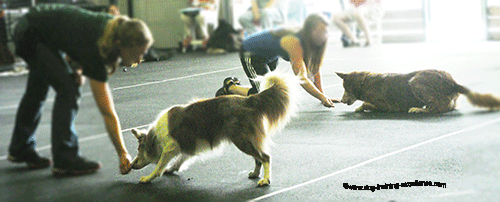
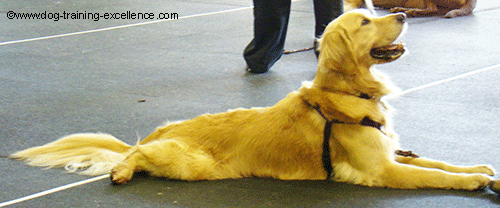
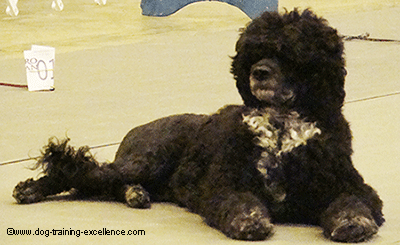
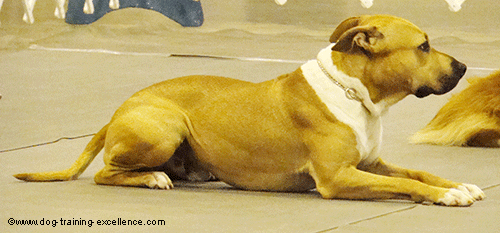

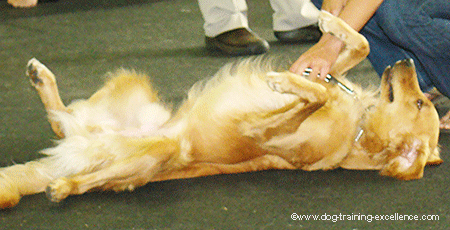
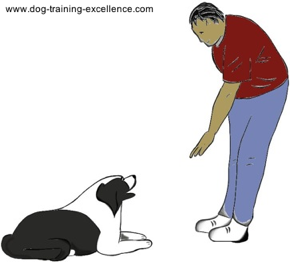
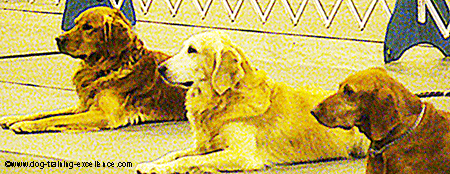

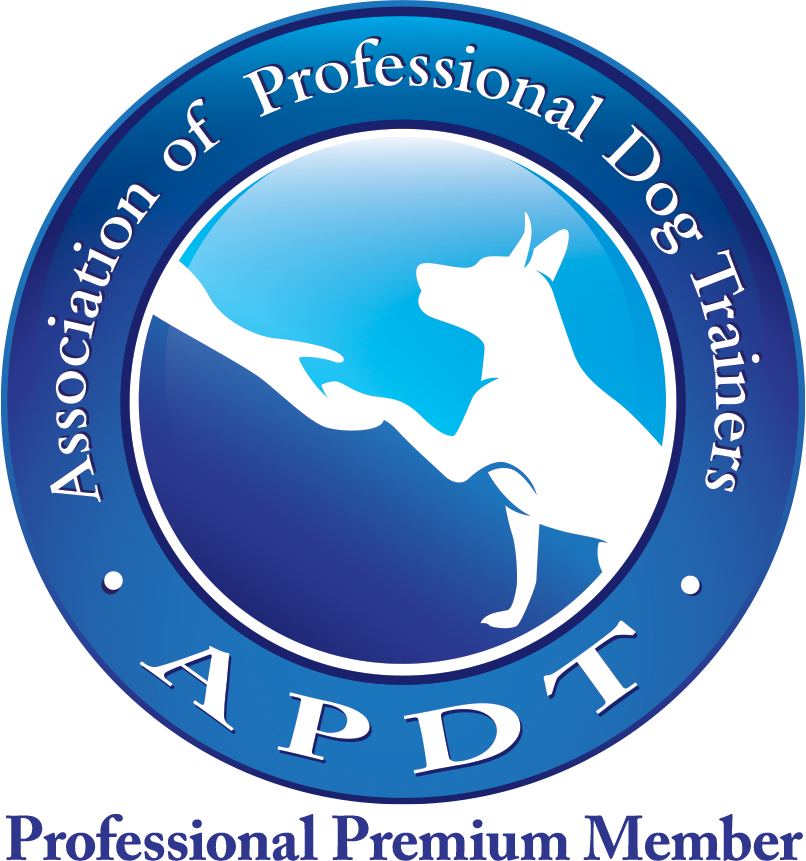


New! Comments
Questions? Anecdotes? Tips? Leave me a comment in the box below.